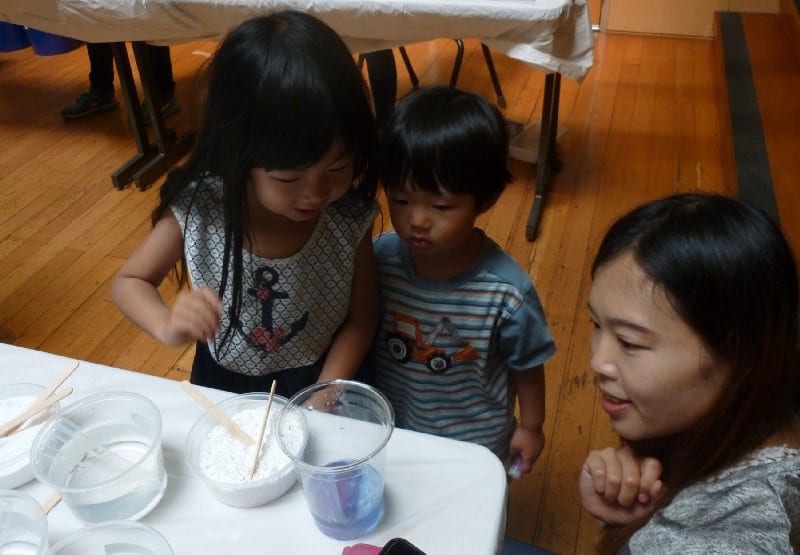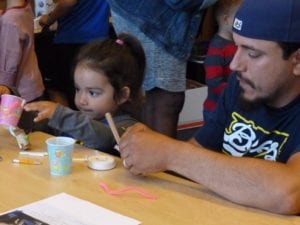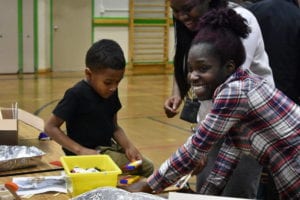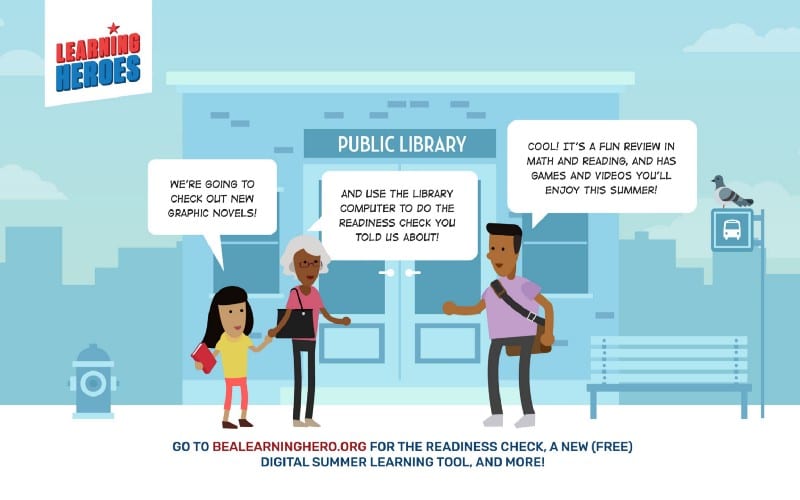By Linda Kekelis, Family Engagement Advisor
Six Ideas to Snap Summer Slide

Photo Courtesy Bay Area STEM Ecosystem
“Not all summers are created equal.” We agree with this assessment from Laura Johnson, VP of Communications at the National Summer Learning Association. STEM Next Opportunity Fund puts forward the challenge — Let’s empower families so that every child has access to quality summer learning.
Summer can offer time to explore new subjects and go deep into personal interests. Summer can also increase the opportunity gap. We know that kids from under-resourced communities may fall behind in academics, while kids in higher-income families increase skills over the summer months. It doesn’t have to be that way. There’s research that shows elementary school kids with high levels of attendance in voluntary summer programs experience benefits in math and reading.
There are lots of summer coding camps, robotic workshops, and environmental science classes where kids can have fun and learn. There are online opportunities too. But, how do parents find summer programs? How do they sort through and make the best choice for their child? How do they take advantage of opportunities without spending a lot of time and money?
STEM Next appreciates the importance of supporting families and summer learning. Here are six ideas to empower families and make 2019 the summer of STEM.

Photo Courtesy Bay Area STEM Ecosystem
#1 Help parents find summer programs. Create a resource that highlights programs that are accessible by public transportation, free or low cost for families, and are creative and culturally relevant. The Summer Learning Recruitment Guide from the Wallace Foundation can help you communicate the value of summer programs to families. You might take a lesson from Digital Youth Divas and engage families with their own research of summer programs. Parents are given time to reflect on their needs (e.g., schedule, transportation, costs) and their goals for their children (e.g., deepening their child’s existing interests or creating new ones), and work in small groups to find relevant programs using a networked city resource. Once they identify programs of interest, they save them and email them to themselves, share with others, or bookmark them to follow up on. What I especially like about this approach is how it creates social networks in which parents become resources for one another. You can learn more about empowering families and building parent networks in our case study about Digital Youth Divas.
#2 Help families apply. Support the application process for families for whom English is their second language or who are not tech savvy. Techbridge Girls created a summer list and went a step further, holding workshops in which they helped families apply online. This experience helped staff understand how family-friendly (or unfriendly) the application process was for different programs. With these insights, staff gave feedback to partners and advocated for more family-friendly applications.

Photo Courtesy OregonASK
#3 Make summer STEM a family experience. The Bay Area STEM Ecosystem offered a summer science series for families. The 10-week program was hosted by 10 different partners at one convenient location. We learned valuable lessons like making explicit that activities are for kids and adults so that parents don’t sit back and watch. From parents who often juggle competing activities on the weekends, we heard how much they appreciated a program that was for kids ages 3–13. The entire family could spend time together and continue talking about these shared experiences at home.
#4 Don’t assume to know what parents are looking for when it comes to summer programs; involve families in the process. Listen to parents to understand their needs and interests along with possible barriers. Think that transportation might be a barrier? Ask parents and enlist their input to figure out ways around potential challenges. Carpools and bus passes might help. Think that a scholarship will make a summer program accessible? Ask parents if that’s what they want or if there are other reasons beyond financial barriers to a summer program. A trusted community partner or family that has participated in the program may help to answer questions and encourage parents.
#5 Don’t let STEM learning end with the end of summer programs. I love the idea of digital postcards that were created at a summer camp at Shaver Center Environmental Center. Kids in grades 3–5 were invited to take photos and write about their camp experiences. These postcards were emailed to parents and available through an access-controlled website. If you try this, take advantage of what the research team from Penn State University learned. A prompt asking kids to tell what they learned during camp was not effective; kids just named what was in their photo. Instead, the following three prompts sparked rich reflections. 1) My picture is of… 2) Today I learned … and 3) I want to learn more about … Kids’ responses helped parents understand their child’s interests and follow up with relevant activities. You can read more about the Digital Postcard Maker project in this article in TechTrends.

#6 Offer ideas that encourage families to do STEM at home, in the backyard, and around the neighborhood. Check out The Busy Parents’ Guide to Easy Summer Learning from EdNavigator. There are family-friendly activities like going to the library and finding the math or science in a movie. You can find more ideas to support summer learning in Summer Stride from Learning Heroes, a research-based, English/Spanish resource. I especially like the suggestion for parents to ask teachers what they can do over the summer to set their child up for success in the next grade. The National PTA, in partnership with Learning Heroes and the National Summer Learning Association, offers more ideas in Summer Playbook Smarter Summer. Brighter Futures. A Summer Playbook for PTA and School Leaders. Families can try the 20–2–1 Summer Challenge. Read something of interest for at least 20 minutes, engage in two activities like writing in a journal or playing outside, and try one math activity each day.
How will you support families this summer? We invite you to share your ideas, successes, and lessons learned. Share on twitter and tag @STEMNext or write us at familyengagement@stemnext.org.
About me. I am an advisor for STEM Next Opportunity Fund. Family engagement has been a passion and at the center of the research and programs I have led for over two decades. My favorite memories from summer include reading lots and lots books, learning to bowl, and playing with friends in the neighborhood until after dark. lkekelis@gmail.com @LindaKekelis

